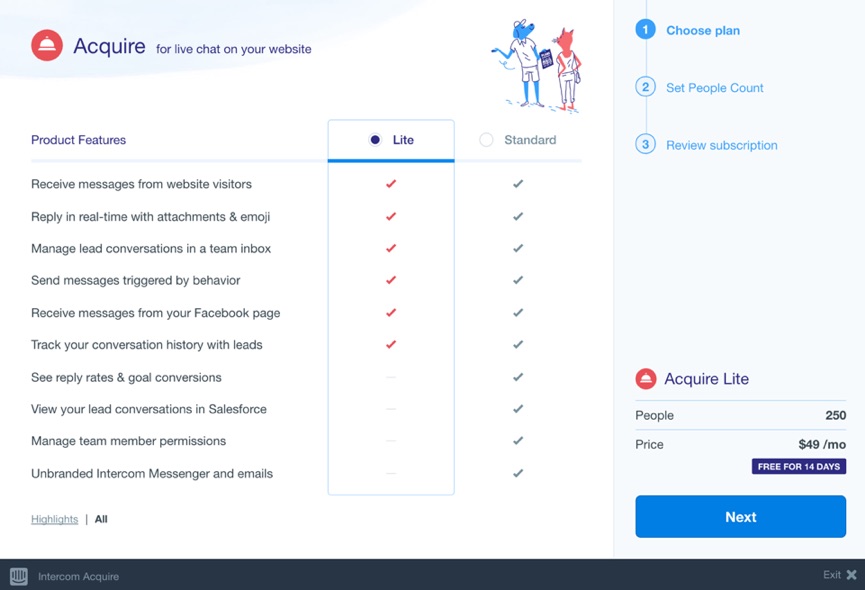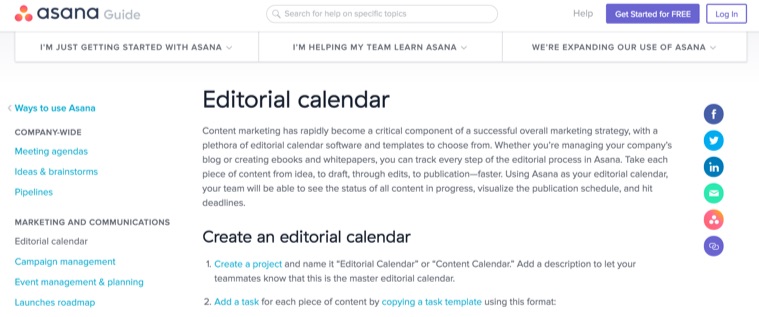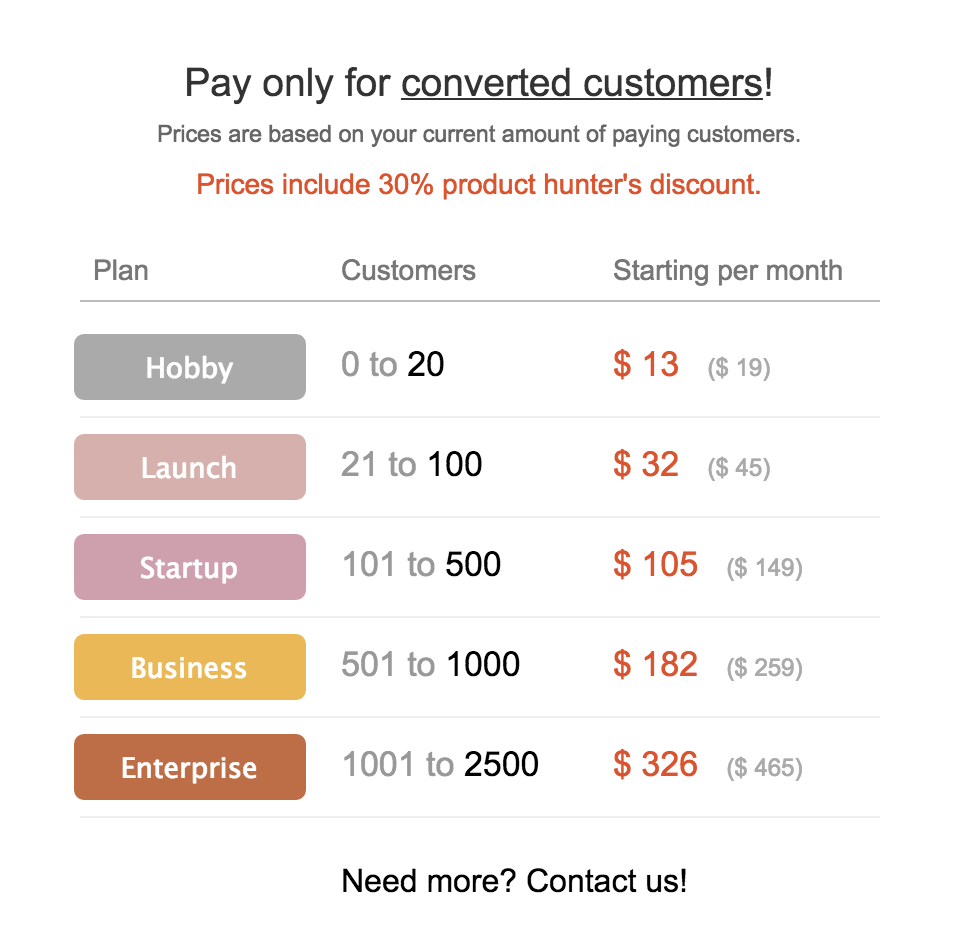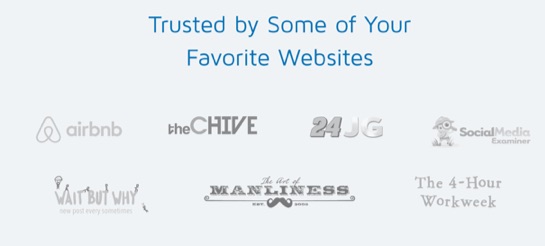Your pricing options suck.
At least that's what some of your consumers think.
They like your products. But the pricing packages aren't meeting their expectations.
Customers may enjoy one feature, but it isn't included in a specific package. Or maybe they admire the pricing but prefer different benefits.
“Pricing is a moving target and found should view it as an ongoing product discovery process. Pricing should be re-evaluated regularly,” says Tomasz Tunguz, a venture capitalist at Redpoint Ventures.
So, what do you do when customers like your product but not your pricing? Check out the four strategies below.
1. Determine Your Most Valuable Benefits
Experts believe “30% of the thousands of pricing decisions companies make every year fail to deliver the best price.” Business managers don't always match the right price to the right services.
What your team deems valuable isn't important. You want to know what buyers love about your products.
That's where data can help. Gather data to identify which benefits your customers enjoy the most.
Monitor customer feedback, product usage, and user behavior. Discover which benefits make your product worth buying.
Once you find the desired benefits, talk about them from the customer's perspective. Speak their language.
Peep Laja, the founder of ConversionXL, writes:
“Your value proposition needs to be in the language of the customer. It should join the conversation that is already going on in the customer's mind. In order to do that you need to know the language your customers use to describe your offering and how they benefit from it.”
Here's an example from Intercom. The team highlights product features in simple, short sentences. It communicates what the platform can do and how it's beneficial to the customer.

Sell consumers on what they like most. Continue to emphasize your SaaS product solutions.
2. Educate Consumers About Undesirable Features
Research shows that “75% of B2B buyers rely more on content to research and make B2B purchasing decisions.”
Content gives your consumers the opportunity to learn about your products. And the information can be easily shared with a team of decision-makers.
Brigg Patten, a business and tech writer, says, “Educating your customer is a vital part of the sales process for any business, and is important in relationship building. Customers have more confidence that your solution is the best for their particular needs when you take the time to ensure they are well-educated.”
Therefore, when customers dislike certain pricing options due to product features, it's time to educate them about the possibilities.
Show consumers how particular features can benefit their businesses. Give them real-life examples that their team can relate to.
For instance, if your SaaS sells subscription billing software, demonstrate why multiple payment methods matter. Produce content showing how their customers want options to pay by credit card, ACH, and PayPal.
When educating your customers, decide how you will convey the message. The medium is just as important as the message itself.
Collect data on which method your consumers prefer. You can send a simple email survey asking for their preferences.
Content formats range from eBooks to webinars to blog posts. Select the one that works for a majority of your users. Your team also may consider doing more than one option.
Below is an example from Asana. Did you know you could create editorial calendars on the platform? The team shows you how through on-demand guides.

Some customers don't dislike your features. They just don't see the benefits. Educate your consumers.
3. Seriously Go Above & Beyond Expectations
Humans love routine. Some drink coffee at the same time each day. Sit at the same desk. And even watch the same TV shows every week.
It becomes a habit. Those patterns mold us to not expect anything new. It's not that we don't want to experience something different. We just don't look for it.
To shake your customers out of the SaaS buying routine, go beyond their expectations. Give customers something extra for choosing a specific pricing option.
“People like bonuses. They help build positive emotions around your brand. They make customers feel happy and appreciated. As a result, the customers will strongly connect these positive emotions to your brand and the chances are you won't be forgotten,” writes Damian Winkowski, former new business developer at PayLane.
For instance, if all your competitors are offering extra storage space for new customers, then provide your buyers with extra storage space and one-month of unlimited access to a customer success manager.
It's all about doing things differently to grab your audience's attention. Customers aren't excited by the same-old sales tactics. They desire a little extra in order for you to secure their business.
SignupLab, a sales CRM and customer success dashboard, rewards people who found them on Product Hunt. They offer interested buyers a 30% discount on their first subscription period.
So, if any consumers really liked their product but hated the pricing options, this discount may convince them to at least give SignupLab a chance.

Add a bonus benefit to your pricing packages. It will give your consumers another reason to choose you over the competition.
4. Emphasize Value With Social Proof
Psychology plays an integral role in sales.
Analysts have found that people buy based on emotions. Consumers purchase because their sad, happy, or even upset.
Moreover, purchases may involve not only internal perceptions but also external pressures. This means we buy items due to our environment.
This is helpful information for your sales team. You can show customers how other clients are benefitting from particular pricing packages.
Social proof makes pricing options irrelevant for some buyers. Because if they see top brands using your services, consumers will feel the need to be part of the pack no matter the circumstances.
So, offer social proof to your customers. Let them hear stories from your most successful clients.
“We tend to imagine ourselves in other people's shoes when we read or hear a story. This is why stories are so persuasive and often more trustworthy than statistics or general trends. Individual examples stick with us because we can relate to them,” states Ed Hallen, co-founder of Klaviyo.
To build trust, SumoMe includes their client logos on its pricing page. These images solidify that many satisfied customers look beyond pricing packages.

Studies also reveal that “70% of consumers say they look at product reviews before making a purchase.” Plus, product reviews are 12x more trusted than product descriptions.
Solicit honest feedback from your customers. And then post those comments on your website. Those reviews will persuade prospective buyers and display your brand's transparency.
Consumers aren't completely pleased with your pricing options. Use social proof to convert them.
Upgrade Your Pricing Options
Customers want your product. But your pricing options aren't meeting their expectations.
Offer the most valuable benefits in your product packages. Educate customers about features they don't initially like. And boost your product's worth by adding verifiable social proof.
Persuade your customers. Upgrade your pricing options.
About the Author: Shayla Price lives at the intersection of digital marketing, technology and social responsibility. Connect with her on Twitter @shaylaprice.
Walang komento:
Mag-post ng isang Komento